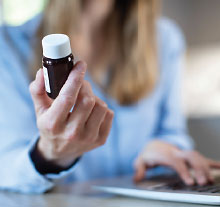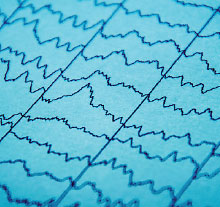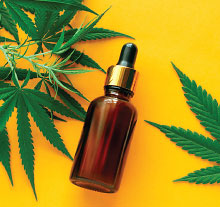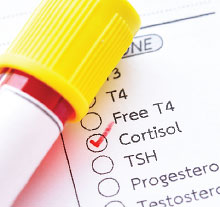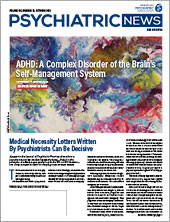Two-Hour Class Helps Participants Manage Pain-Related Emotions
Adults with low back pain who received a single pain management class showed similar improvements in their emotional and cognitive responses to pain as those who participated in eight sessions of cognitive-behavioral therapy (CBT), a study in JAMA Network Open has found. The two-hour class, called Empowered Relief, is based on CBT principles and incorporates pain education, self-regulation skills, and mindfulness techniques.
Researchers at Stanford University and colleagues randomized 263 adults who had been experiencing chronic low back pain for more than five years to one of three treatments: Empowered Relief, a two-hour back pain health education class (content included warning signs of back pain, when to speak with a physician, and general nutrition), or eight two-hour sessions of CBT for pain. The participants were evaluated using the Pain Catastrophizing Scale—which assesses the frequency of various cognitive or emotional responses to pain—and other pain measures at baseline and three months after treatment.
After three months, pain catastrophizing scores significantly improved in participants in the Empowered Relief and CBT groups; average Pain Catastrophizing Scale scores dropped by 10.94 points for CBT and 9.12 for Empowered Relief—improvements that the authors noted were comparable. Empowered Relief was also comparable to CBT in terms of reducing pain intensity, sleep disturbances, depression, and anxiety. Empowered Relief was inferior to CBT at improving participants’ physical functioning.
“[E]mpowered Relief is not meant to replace the longer-course CBT, which offers extended therapist contact, peer support, and didactic content (e.g., functional goal setting and mood management),” the researchers wrote. “Rather, a range of behavioral treatment options is needed to meet the diverse needs and wants of patients.”
Side Effect Burden Predicts Response to Antidepressants
The burden of antidepressant side effects as early as four days into treatment may predict how effective the treatment will be at reducing depressive symptoms, a study in Translational Psychiatry has found.
Researchers at the University of Sydney and colleagues analyzed data from more than 1,000 adults with depression who participated in the international Study to Predict Optimized Treatment for Depression. This study was designed to look for biomarkers of treatment response to escitalopram, sertraline, and extended-release venlafaxine. Among numerous measures, participants filled out the Frequency, Intensity, and Burden of Side Effects Rating (FIBSER) scale at Day 4 as well as two, four, and six weeks after starting treatment.
The researchers found that the frequency, intensity, and burden of side effects all increased over the first two weeks of treatment; side effect frequency and intensity began to decline over the next four weeks while burden level remained stable.
At each time point, higher scores for side effect burden were associated with lower odds of depression remission, defined as a score of 5 or less on the 16-item Quick Inventory of Depressive Symptomatology–Self-Rated (QIDS-SR16). High side effect burden was also associated with reduced odds of antidepressant response (50% or greater decrease in QIDS-SR16 scores) at all points except week 4. A greater intensity of side effects at week 2 was also associated with poorer remission.
“Given that burden of side effects not only predicted poorer treatment outcome but also failed to decrease throughout the course of treatment, a specific focus for future research should also be into the impacts of side effects causing enduring versus transient burden,” the researchers wrote.
Brexanolone Shifts Neural Rhythms in Basolateral Amygdala
Brexanolone—approved by the Food and Drug Administration to treat postpartum depression—is known to act on GABA-A receptors, but scientists do not fully understand how the medication exerts persistent antidepressant effects. A study by researchers at Tufts University School of Medicine and colleagues provides evidence that brexanolone and related neurosteroids operate by modifying neuronal activity in the basolateral amygdala, a region known to be involved in emotional processing.
These findings were published in Biological Psychiatry.
The investigators first used electroencephalography (EEG) to monitor brainwaves in people administered oral samples of brexanolone (22 mg or 55 mg) or placebo. The researchers found that the people administered brexanolone had elevated frequencies of several brainwaves compared with those given a placebo. Follow-up studies in rodents using a brexanolone analog called SGE-516 produced similar results, and the researchers were able to pinpoint the brainwave changes to the basolateral amygdala.
To confirm this region was important, the investigators injected SGE-516 into the basolateral amygdala of mice who exhibited anxious behaviors due to induced stress and found that the animals’ symptoms improved. They were also able to mimic the anti-anxiety effects of SGE-516 by stimulating the basolateral amygdala with light energy. SGE-516 had no effect in mice lacking GABA-A receptors in basolateral amygdala neurons, supporting the critical role of these receptors.
The investigators suggested that brexanolone may shift basolateral amygdala brainwave rhythms to a more stable state that is resistant to chronic stress.
“Our findings demonstrate a novel molecular and cellular mechanism mediating the well-established anxiolytic and antidepressant effects of neuroactive steroids,” the authors concluded.
THC-Lipid Combo Helps Reduce Symptoms of Tourette’s
Small clinical trials have shown that Δ9-tetrahydracannabinol (THC)—the psychoactive component of cannabis—can improve tic symptoms associated with Tourette’s syndrome. However, the high doses used to treat tic symptoms can lead to unwanted side effects. A pilot study appearing in the Journal of Neuropsychiatry and Clinical Neurosciences reports that combining THC with the lipid compound palmitoylethanolamide (PEA) can improve the benefits and safety profile of this chemical in people with Tourette’s syndrome.
Researchers at Yale University enrolled 16 adults with Tourette’s and significant tic symptoms (defined as a Yale Global Tic Severity Scale, or YGTSS, score of 22 or higher); the average YGTSS score of the group was 38.1. The participants were given THX-110, a combination of up to 10 mg THC and 800 mg PEA, once daily for 12 weeks.
After 12 weeks, average YGTSS scores improved by about 20%, with four participants experiencing a 35% or greater improvement. THX-110 also worked rapidly, with visible improvements emerging after just one week. Several patients experienced improvements with 5 mg THC or less. Though most participants experienced mild, transient side effects such as fatigue, dizziness, or dry mouth, only two left the study early—one due to drowsiness and fatigue and a second because the medication was not improving symptoms.
The findings raise “questions of whether use of PEA may allow for a reduced dose of Δ9-THC to be effective in the treatment of tics, and if combination Δ9-THC/PEA or Δ9-THC alone could be used not only as a chronic medication to help tics (as studied in this trial) but also as an acute short-term medication to be used during symptom exacerbation,” the researchers wrote.
Low Cortisol May Help Predict PTSD After Heart Attack
Low levels of the stress hormone cortisol in the blood following a heart attack may predict those at higher risk of posttraumatic stress disorder (PTSD) over the next 12 months, reports a study in the Journal of Affective Disorders. As blood tests are routinely taken for heart attack patients, this finding offers another potential biomarker to identify patients at risk of PTSD early.
Researchers at the University of Zurich and colleagues examined data from a clinical study exploring whether early psychological counseling could prevent PTSD in patients who experienced a heart attack and were considered at high risk of developing PTSD. As part of the study, the participants received clinical assessments and provided blood samples after hospital admission and again three and 12 months after discharge. For this analysis, the researchers assessed the 106 study participants who completed the 12-month follow-up.
The researchers found that patients with lower levels of cortisol after their heart attacks were more likely to have elevated PTSD symptoms (measured with the German version of the Clinician Administered PTSD Scale, or CAPS) at three and 12 months. Patients who were younger and reported worse sleep before being hospitalized also had higher CAPS scores at three and 12 months.
The researchers suggested that future work should try to identify specific cortisol cutoff levels to delineate heart attack patients at high risk of PTSD. ■

